Seoul is truly unlike any other city on the planet. It’s a bustling metropolis with vibrant restaurants, lively markets, and gorgeous historic buildings. While South Korea has been in the spotlight recently due to the massive popularity of K-Pop and acclaimed films, Seoul’s always been ahead of the curve!
This city has many breathtaking locations, and you’ll need plenty of time to explore everything it has to offer. From trendy neighborhoods featuring vintage shops, authentic food streets offering delicious local delicacies, and charming tea houses located in vast forests, Seoul has it all.
With so much to do in Seoul, navigating the city can become a little overwhelming. Our quick guide on things to do in Seoul covers all the major hot spots along with easy-to-follow itineraries that will make sure you make the most of your time in this mesmerising city.
Tourist Attractions
Whether you’re itching to catch the hottest K-Pop acts, enjoy a late-night food adventure, or unwind in a peaceful spa or temple, Seoul, the bustling capital of South Korea, has something for everyone. Check out these must-see attractions in the city below.
Namsan Park
Namsan Park draws in over 20,000 visitors daily and offers a natural escape within the bustling city. From its peak at 262 meters (860 feet), you can enjoy breathtaking views of downtown Seoul and its surroundings.
One of the park’s highlights is its phenomenal walking trails, where you can see local wildlife, including adorable squirrels. The Cherry Blossom Path, the city’s longest stretch of cherry trees, is especially famous for its full bloom.
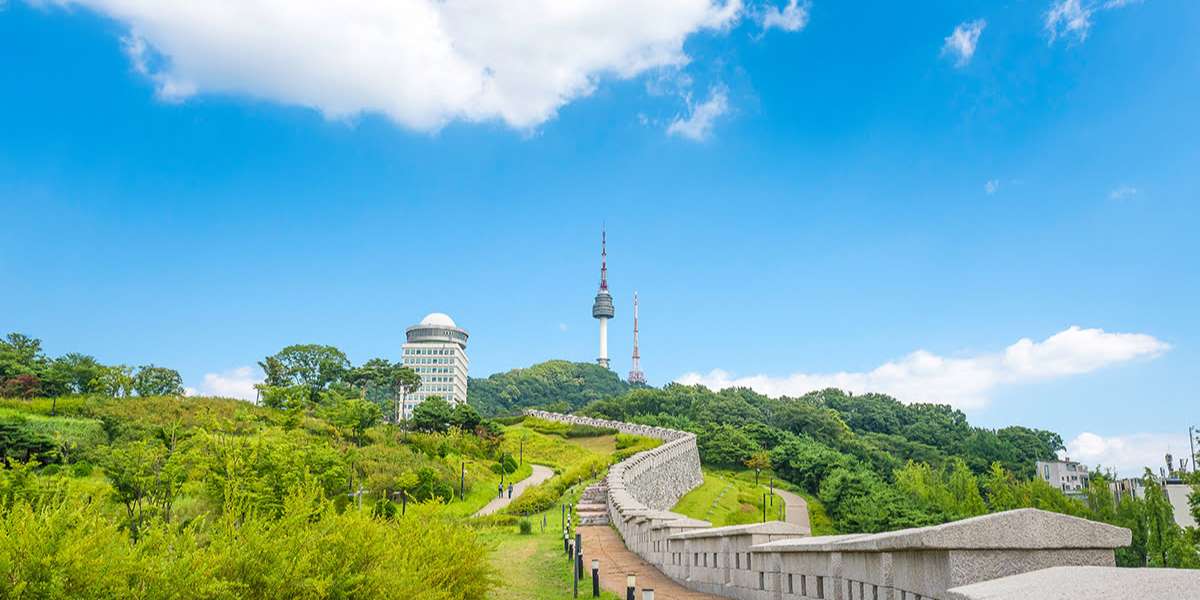
Moreover, finding a perfect picnic spot in Namsan Parkon Mount Namsan is a breeze. Just grab a mat, gather your crew, and chill among the greenery! Additionally, the park offers various attractions to keep you entertained, including a botanical landscaped garden, pond, snack corner, and even a library for book lovers.
While visiting the park, don’t forget to check out Baekbeom Square, a significant area within the park, honoring the legacy of Baekbeom Kim Gu, a prominent figure in Korean independence history. Here, you can explore the statues and monuments dedicated to Kim Gu and other famous individuals, reflecting their contributions to the nation’s freedom and cultural heritage.
Locks of Love
Ever heard about Locks of Love? It’s a charming tradition where people hang locks on a wall near N Seoul Tower to symbolize their enduring love.
If you want to be part of this romantic gesture, bring your lock and join the thousands already adorning the wall. You can buy a lock from nearby vendors, write a heartfelt message, secure it to the fence, and then toss away the key. Interestingly, this spot is a popular filming location for Korean dramas, making it even more special for visitors to recognize it from their favorite K-dramas!
N Seoul Tower
Namsan Tower, also known as N Seoul Tower, is a stunning structure located at the base of Namsan mountain right in the heart of Seoul. Often called the South Korean version of the Eiffel Tower, it’s a major hotspot in the city.
This tower, built in 1971, serves as both a communication hub and an observation deck, giving visitors a spectacular view of Seoul.
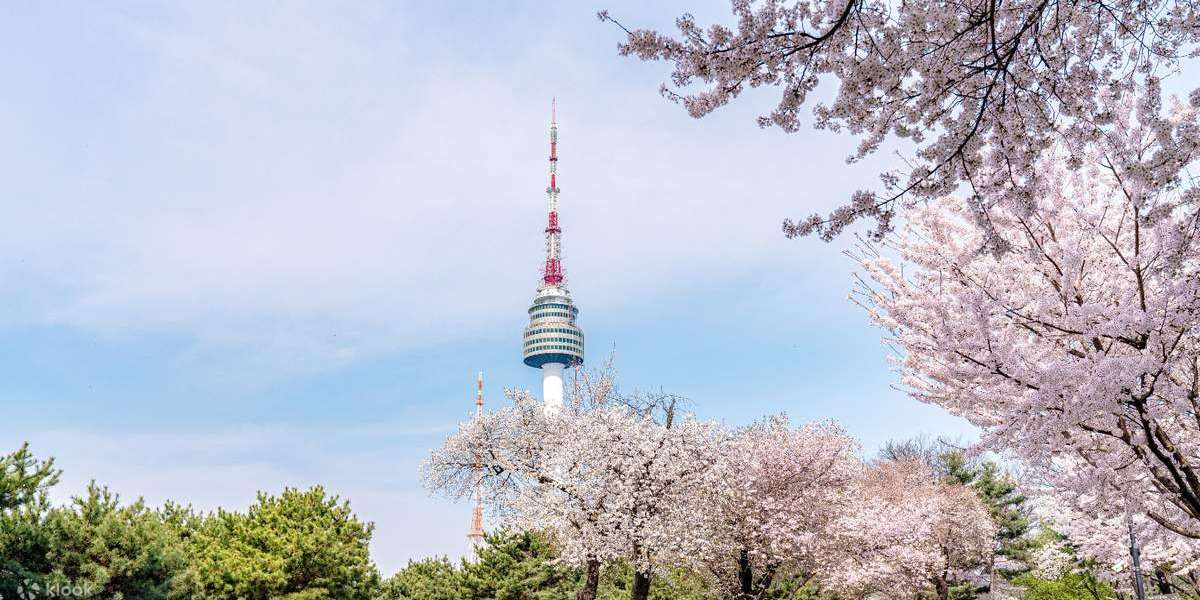
Standing tall at 777 feet, it’s the city’s second-highest point. It’s still up and running today and beams out signals for various media outlets.
The tower’s become a big hit with travelers from all over the globe since opening its doors to the public in the ’80s. Locals and tourists love to check out this iconic spot, with around 8.4 million visitors making the trip to South Korea each year just to catch a glimpse of the Seoul Tower.
Bukchon Hanok Village
If you’re into exploring and want to get a real taste of Korean culture, Bukchon Hanok Village is the place to be. Tucked away between Gyeongbok Palace and Changdeok Palace in north-central Seoul, Bukchon Village boasts the largest collection of traditional Korean homes, called hanoks, in the city. These 900 hanoks have been around since the Joseon Dynasty, giving you a glimpse into the past.
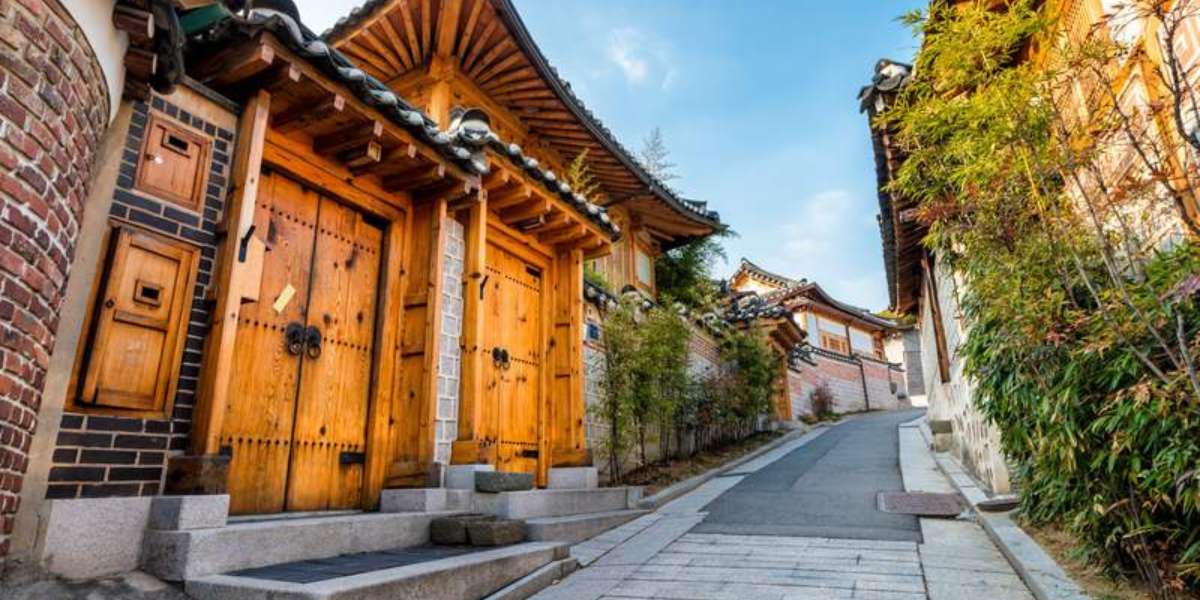
But don’t think this neighborhood is stuck in history! While some hanoks are still private residences, others have been transformed into tea houses, cafes, coffee shops, galleries, inns, and museums. Make sure to check out the village’s standout features like the performing arts stage, plaza, and traditional Korean garden.
There’s plenty to keep you entertained here, from leisurely strolls and traditional tea ceremonies to captivating taekwondo performances.
Bukhansan National Park
Bukhansan National Park is an amazing natural getaway right in northern Seoul, and you can easily get there using public transportation. Covering over 30 square miles, the park is like a mountain paradise in the middle of the city chaos. With its towering granite peaks, lush forests, and countless hiking trails, there’s so much to explore!
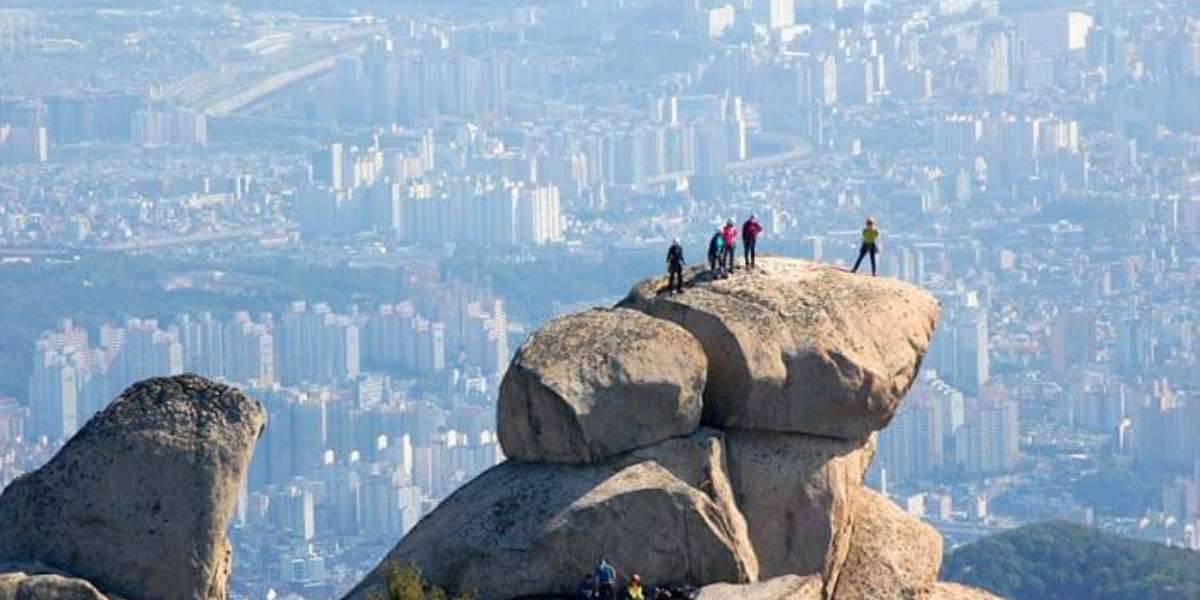
But that’s not all—this park is also home to about 100 historic Buddhist temples and monks’ cells, adding a whole extra layer of cultural richness. One must-see spot is the Bukhansanseong Fortress, a stronghold from the Joseon era. And don’t forget to check out the 5-mile mountain wall that snakes through the rocky landscape—it’s seriously impressive!
Built-in 1711, the fortress was a safe haven for kings during emergencies and has roots dating back to A.D. 132.
Bukhansan is a hot spot for visitors, earning a spot in the Guinness World Records for most visitors per square foot. That being said, it can get pretty crowded, especially on weekends. But don’t let that stop you from experiencing this marvelous park!
Changdeokgung
Changdeokgung may not be the oldest or the biggest palace from the Joseon Dynasty in Seoul (that title belongs to Gyeongbokgung), but it’s definitely the most well-preserved. Built iBuilt-ins a secondary palace, it went through some tough times during the Japanese invasion in 1592. However, after being rebuilt in 1610, it became the main palace for 13 kings over about 270 years. Talk about royal living!
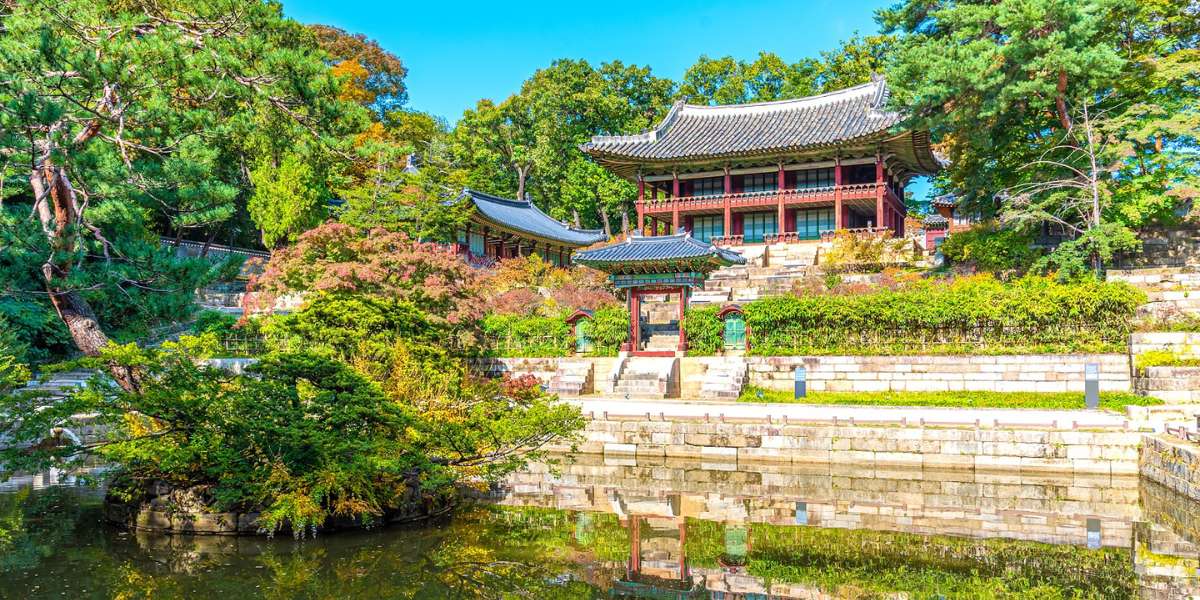
What sets Changdeokgung apart is its historical significance and unique layout. Unlike other palaces, it’s built to fit the natural landscape, not the other way around. That’s why UNESCO recognized it as a World Heritage site in 1997.
Sure, the palace buildings are stunning with their vibrant colors, but the real star is the Secret Garden, covering two-thirds of the 110-acre site. It features a lotus pool, fountains, pavilions, and 56,000 trees and plants, including one that’s over 300 years old! We recommend visiting it in the fall for the amazing foliage or in the spring when the garden bursts into bloom—it’s truly a sight that’ll take your breath away.
Dongdaemun
Dongdaemun is not just like any market; it’s a shopper’s paradise! Stretching across 10 city blocks, Dongdaemun boasts 26 malls, 30,000 specialty shops, and countless wholesale shops. Whatever you need, you’ll find it here.
But don’t forget to get a map of the area. With so many options, navigating this massive shopping mecca without some guidance is like trying to find a needle in a haystack. And guess what? Dongdaemun Market is open 24/7, with many shops staying open until the early hours of the morning.
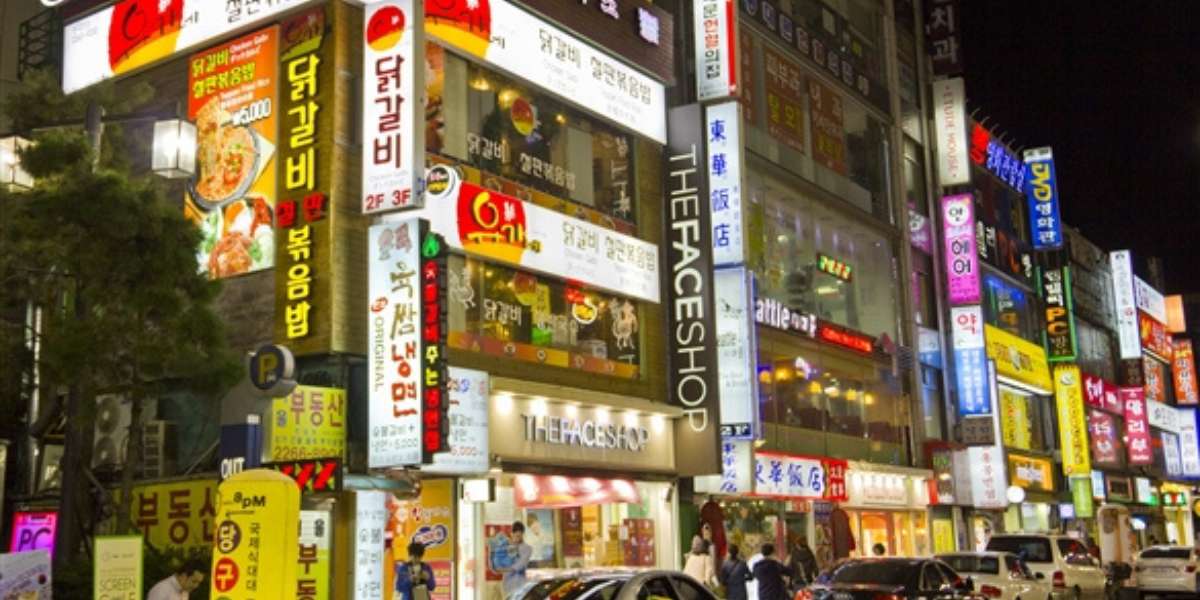
Most malls in Dongdaemun offer a mix of retail and wholesale goodies, but it helps to know which ones specialize in what. To make things easier, split the area up by Jangchungdan-ro, a major street cutting through the market. West of Jangchungdan-ro, you’ll find malls catering more to tourists, like Doota, Good Morning City, and Hello apM. They’ve got info desks in multiple languages and currency exchanges for your convenience. On the east side, it’s more about wholesale. Places like Designer’s Club and Gwanghee Fashion Mall are particularly great spots. However, if wholesale is all you’re after, head to Pyeonghwa Fashion Town, north of Doosan Tower.
And, finally, when you get hungry, make a beeline for Mukja Golmok, or “Let’s Eat Alley.” You’ll find a delicious array of Korean cuisine to satisfy your cravings. So, gear up for a shopping spree and a foodie adventure at Dongdaemun!
Jongmyo Shrine
Jongmyo Shrine is a UNESCO World Heritage site and one of the oldest and most well-preserved Confucian royal shrines globally. Dating back to the late 14th century, this shrine was a key spot for kings of the Joseon Dynasty to worship. They’d come here to honor deceased royals and pray for the state and its people.
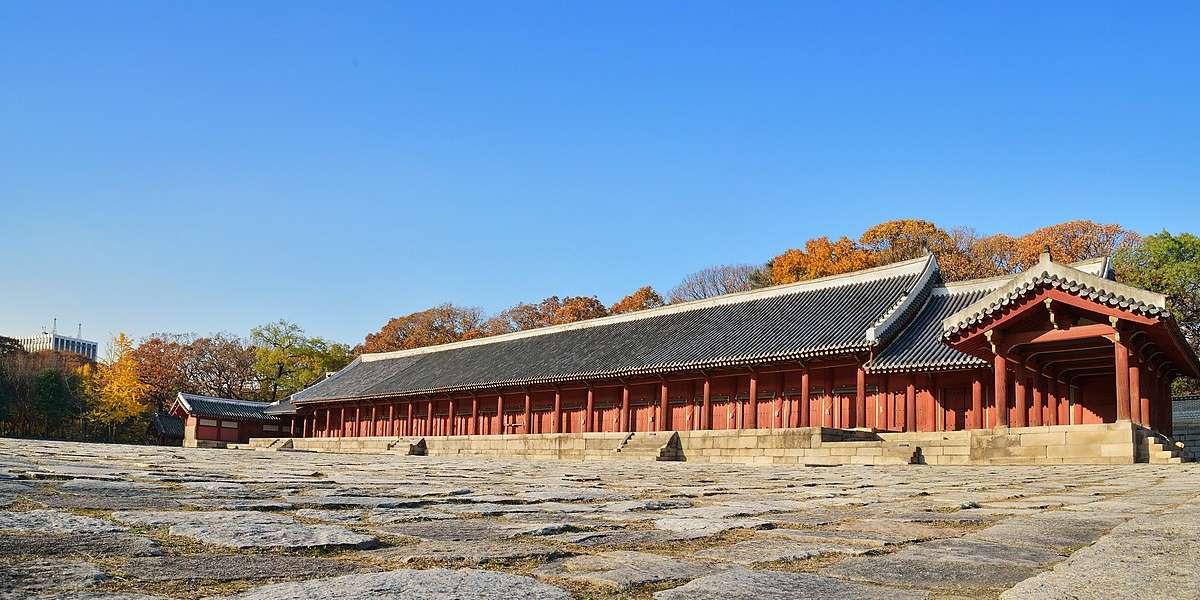
Despite being destroyed during the 16th-century Japanese invasion, it was rebuilt in the 17th century and hasn’t changed much since. The shrine complex includes the main shrine, called Jeongjeon, and the Hall of Eternal Peace, known as Yeongnyeongjeon.
One of the coolest things about Jongmyo is the annual “Jongmyo Jerye” ritual, held every first Sunday of May. It’s a special ceremony where people gather to honor the Joseon dynasty ancestors. The rituals, songs, and dances performed here have been around for 600 years, making them super special. In fact, they’re considered one of Korea’s Important Intangible Cultural Properties and one of the oldest complete ceremonies in the world.
Gwangjang Market
Gwangjang Market is a foodie paradise in Seoul, known for its spicy, diverse, and wallet-friendly street eats. Dating back to the early 20th century, this bustling covered market has become a hotspot for food enthusiasts craving some of the best street snacks in the country.
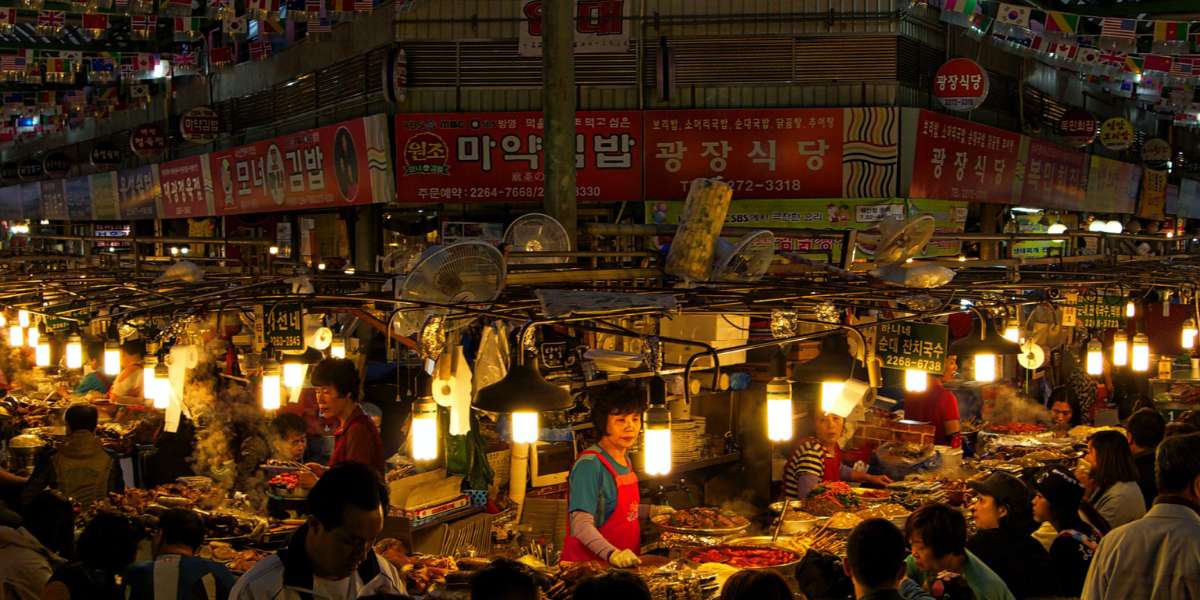
You’ve gotta start your food adventure with tteokbokki—those stir-fried rice cakes drenched in bright orange spicy sauce are a must-try. Then, dig into some mandu, delicious Korean dumplings, and wash it down with a savory pajeon, a green onion pancake. And don’t forget dessert! Treat yourself to hotteok, a pancake filled with brown sugar and cinnamon, or bungeoppang, a fish-shaped pastry stuffed with sweet red bean paste. And you know what? You can visit this place multiple times and do it all over again because there’s just so much tasty goodness to explore at Gwangjang Market!
Gyeongbokgung Palace
Gyeongbokgung Palace is a must-see spot. It’s a majestic palace, dating back to the powerful Joseon Dynasty in the 14th century. Although it faced destruction during the 16th-century Imjin War, it was rebuilt in the 18th century and stands today as the largest and most splendid of Seoul’s five royal palaces.
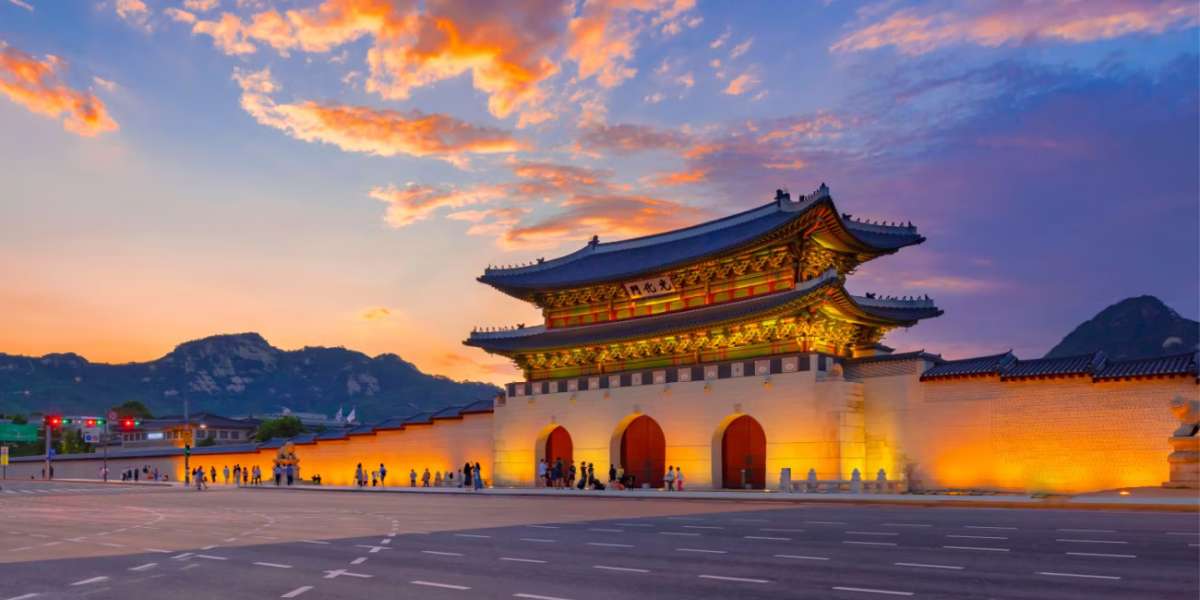
Gyeongbokgung, also known as the Northern Palace, was the main royal residence in South Korea from 1592 to 1598. With over 300 buildings, including The National Folk Museum and The National Palace Museum, there’s so much to explore.
One highlight is Gyeonghoe-ru, a marvelous pavilion in the middle of an artificial pond where royal banquets were held. Another is the Hyangwonjeong Pond, built by King Gojong in 1873 as his private retreat. Lastly, don’t miss the re-enactments of the Changing of the Royal Guard and the Patrol Ritual, happening daily in front of Heungnyemun Gate. Plus, you can join free guided tours in English, Japanese, and Chinese to learn even more about this fascinating palace. Trust us, Gyeongbokgung Palace is an experience you won’t want to miss!
Lotte World
Lotte World in Seoul is not just any theme park—it’s a whole world of fun! With both indoor and outdoor attractions, shopping malls, and a fancy hotel, it’s the ultimate destination for thrill-seekers and culture enthusiasts alike.
At this amusement park, you can experience everything from heart-pounding rides to cultural performances. In this world, there’s a 4-story indoor theme park called the Indoor Adventure, where you’ll find 22 rides inspired by different parts of the world. From the Spanish pirate ship Conquistador to the French Revolution roller coaster, there’s something for everyone. Plus, don’t miss the Jurassic Park-inspired Flume Ride—it’s a splash!
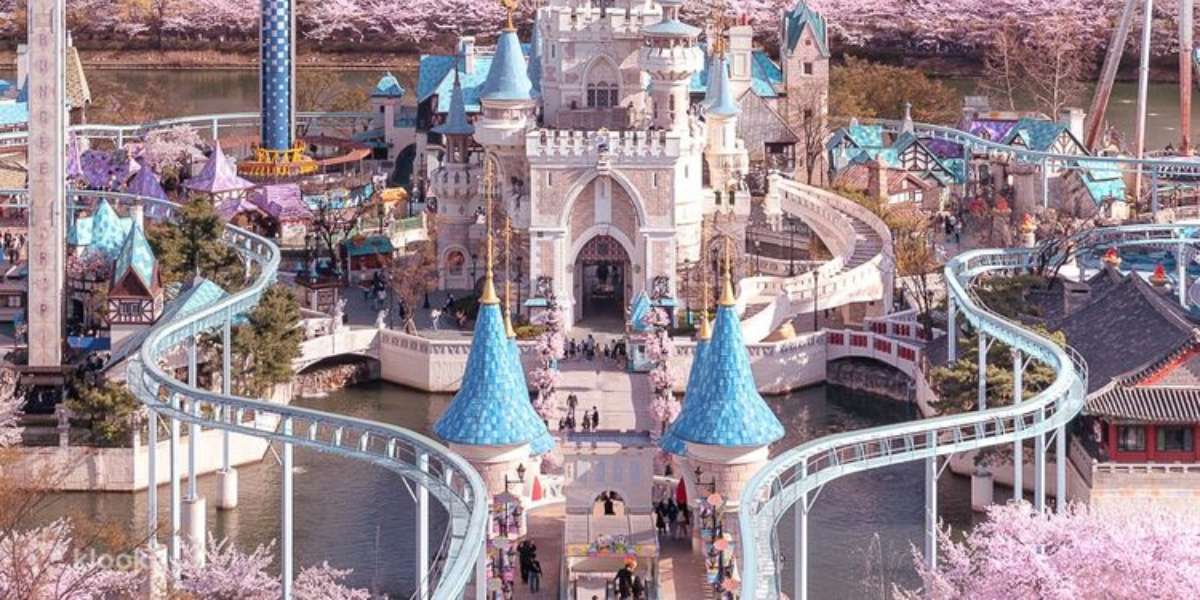
Throughout the year, the Indoor Adventure hosts festivals and parades, like the Masquerade Festival and the Rio Samba Carnival. On the 3rd floor, you can explore a Korean folk museum and shop for local handicrafts at the traditional market street, Jeojageori.
But the fun doesn’t stop there! Head outside to Magic Island, an outdoor theme park surrounded by Seokchon Lake. Get your adrenaline pumping on the Gyro Drop, a 70-meter-high freefall ride, or swing into action on Gyro Swing. With its medieval-style Magic Castle and 17 high-altitude rides, Magic Island is a must-visit for any thrill-seeker. So, grab your friends and family and get ready for a day of excitement at Lotte World!
Bongeunsa Temple
Bongeunsa Temple, a Buddhist temple in Gangnam-gu near Starfield COEX Mall, was built in 794. It offers a chance to explore traditional Korean Buddhist customs and artifacts. Despite being surrounded by modern buildings, the temple gives off a peaceful ambiance. You can admire colorful murals and altars in halls like the Daeung-jeon Main Hall and Jijang-jeon Hall. Daeung-jeon boasts white paper lanterns and a pagoda, while Jijang-jeon showcases murals of underworld kings and Jijang-bosal, the Bodhisattva of the Afterlife.
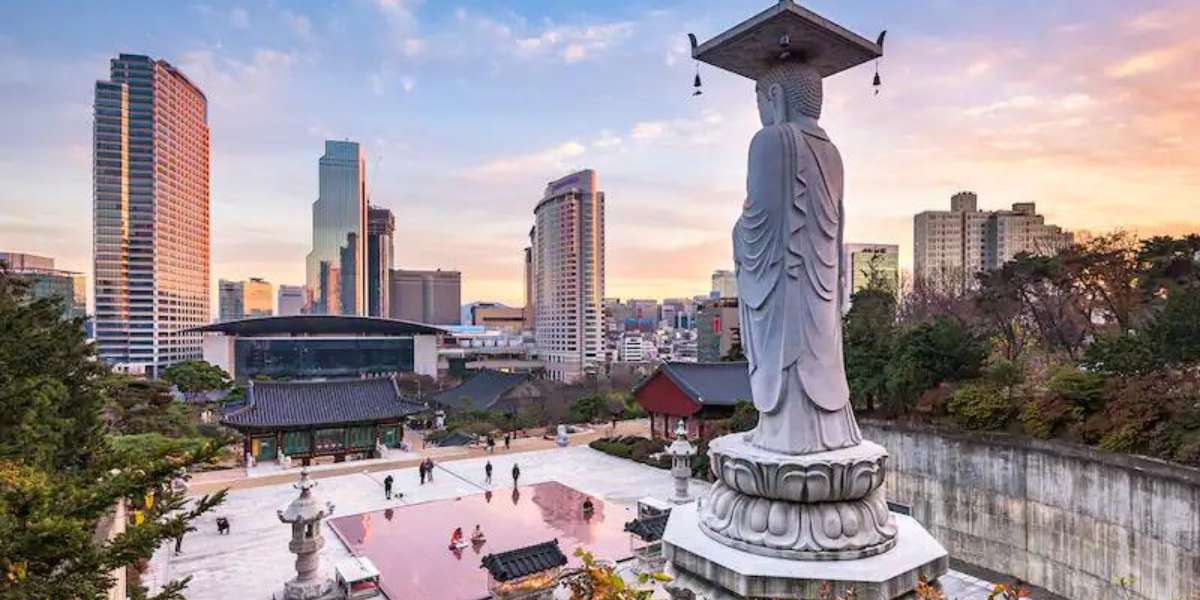
The temple hosts various cultural activities such as guided tours in Chinese, Japanese, and English, lotus lantern crafting, dawn services, and tea ceremonies. Additionally, visitors can participate in temple stay programs to experience the life of a Buddhist monk and gain insights into Korean Buddhist traditions. Famous artifacts at Bongeunsa include 300 woodblock sutras and calligraphy by Kim Jeong-hui, a scholar from the Joseon Dynasty. Moreover, the temple features a towering 32-meter statue of Maitreya Buddha.
Furthermore, every year, from late January to early February, Bongeunsa Temple celebrates the Seoul Lotus Lantern Festival. It celebrates the Buddha’s birth, with a display of traditional lanterns and is a gorgeous festival that’s sure to leave you stunned.
Myeongdong Market
Myeongdong Market stands out as a top shopping spot in South Korea, boasting department stores, malls, and indie shops, along with trendy eateries. We especially love malls like Lotte Department Store, Noon Square Shopping Mall, and Lotte Young Plaza that draw in huge crowds. Moreover, M Plaza further makes this market more charming. It includes the Seoul Culture and Tourism Centre and a venue for live performances.
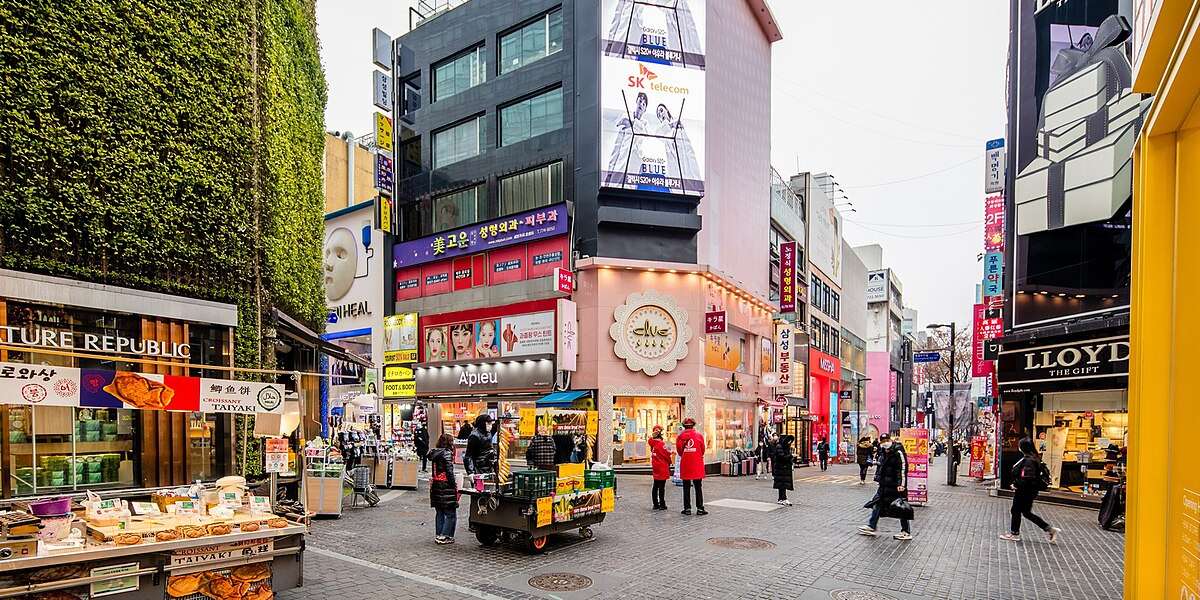
If you love fashion, this market will become your favorite spot. It’s known for its abundance of skincare and makeup brands, with over 1,000 Korean labels like Nature Republic, Etude House, and The Face Shop. Foodies also love the market’s culinary wonders, with street stalls offering treats like fish cakes, Korean fried chicken, tteokbokki, and bulgogi. For a unique taste, you can try soondae, a Korean blood sausage filled with various ingredients.
Apart from shopping and dining, Myeongdong Market offers sightseeing spots such as the gothic-style Myeongdong Catholic Cathedral and the historic Namdaemun Market. Furthermore, you can also catch a performance at Myeongdong Theatre, the first venue in Korea to showcase the internationally acclaimed Nanta play, featuring comedic, percussion-driven acts.
Bugaksan Mountain
Bugaksan Mountain, or Baekaksan as some call it, proudly stands as Seoul’s highest peak, reaching over 340 meters above sea level. It’s not just a mountain; it’s a journey through time, with beautiful walking trails that wind past ancient gates and fortress walls dating back to the 15th century. Take your time on the two-hour hike to the top, where you’ll be greeted by gorgeous views of Seoul, Gyeongbokgung Palace, and the iconic N Seoul Tower.
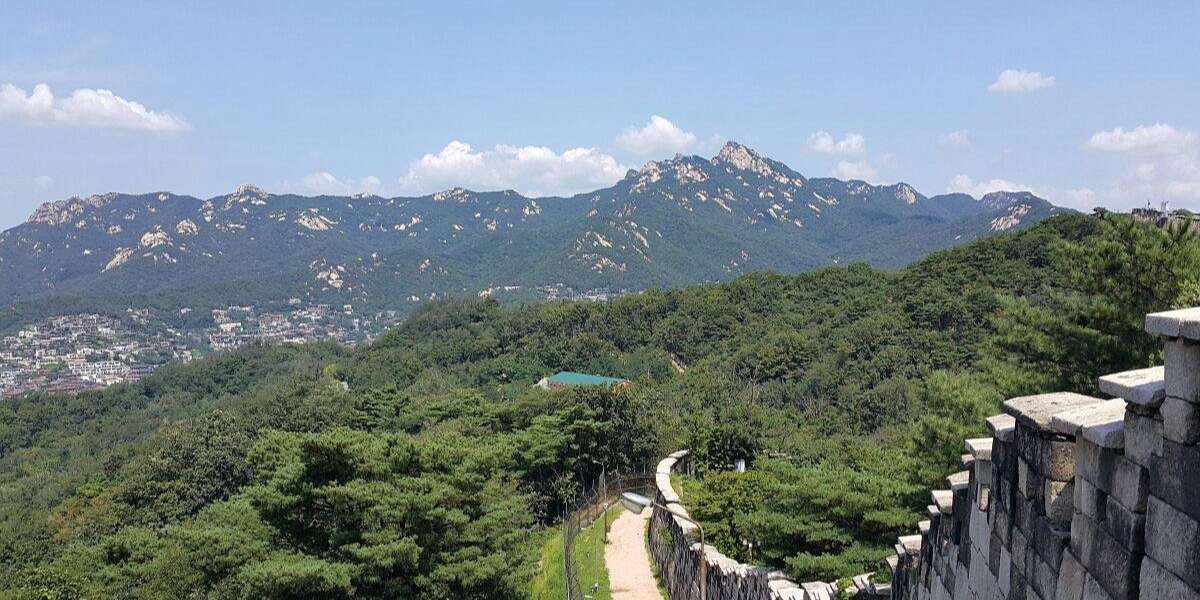
As you make your way up, you’ll also see historical treasures like the Seoul Fortress Wall, Bugak Pavilion, and the stunning Samcheong Park. Oh, and don’t forget your passport! You’ll need it to access the trails and won’t be allowed to explore them without it.
63 SQUARE
Now, if you’re in the mood for some sky-high exploration, look no further than 63 SQUARE. This towering skyscraper, standing tall at 264 meters, offers more than just a view. The 63 Art Gallery awaits at the top, treating visitors to breathtaking vistas of downtown Seoul, the winding Han River, and the majestic Bugaksan, Namsan, and Gwanaksan Mountains.
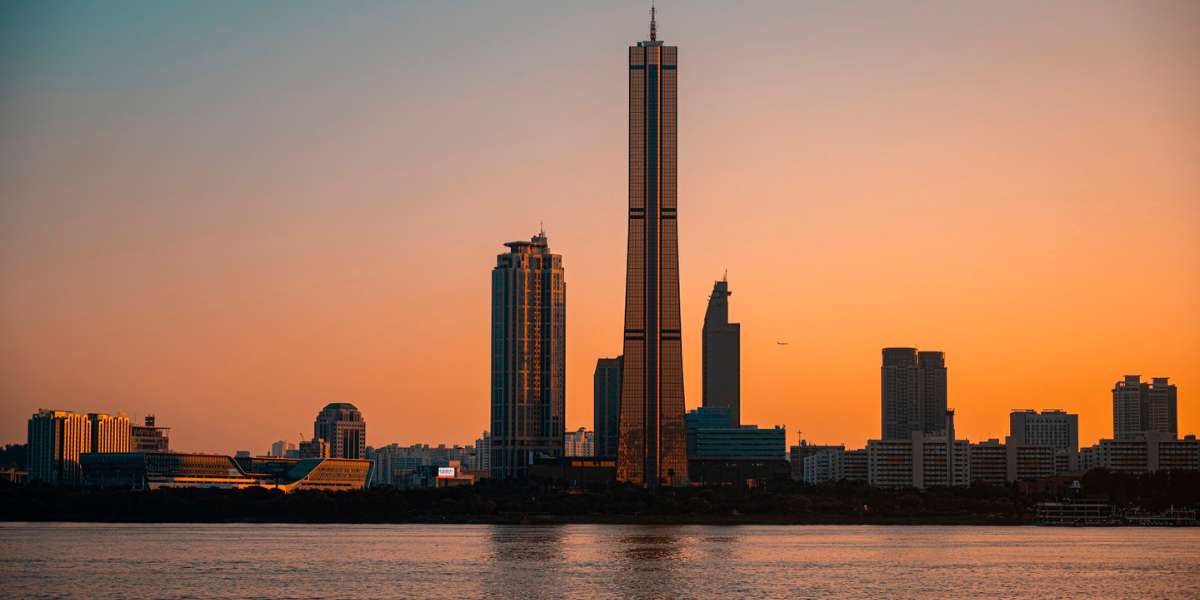
And when you feel hungry, head up to the top floors of 63 SQUARE, where a culinary adventure awaits. From European delicacies to comforting Korean dishes, there’s something to satisfy every craving here!
Insa-dong
Now, let’s dive into the vibrant streets of Insa-dong. This stunning district is packed with antique shops, cozy teahouses, and quaint bookstores lining its narrow alleys. Art lovers will love it particularly as it has approximately 100 galleries showcasing traditional Korean fine art. Plus, don’t miss Hakgojae Gallery for street art or Gana Art Gallery for emerging talents from across the country.
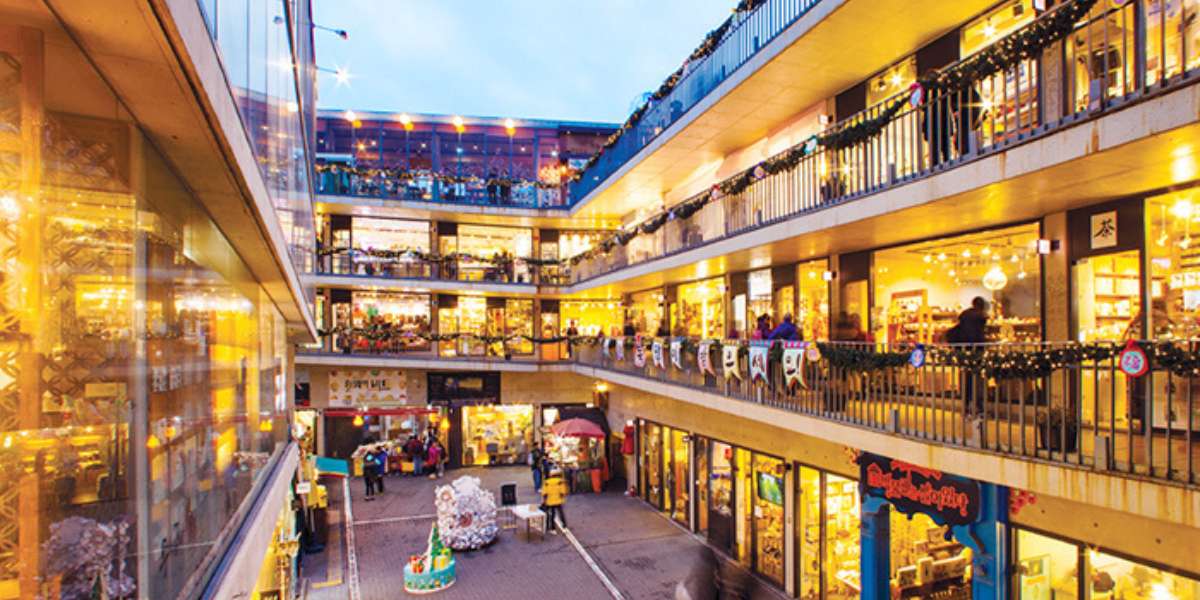
On weekends, Insa-dong’s main street changed into a pedestrian paradise, buzzing with classical concerts, art exhibitions, and the irresistible aroma of Korean street food.
While you’re here, make sure to check out the Kimchi Museum, a must-visit destination spot celebrating South Korea’s beloved dish, hailed as one of the healthiest in the world. And don’t forget to snap a selfie at the quirky Selfie Studio, where you can strike a pose in themed photo booths for just a few bucks. Finally, take a moment to explore the serene beauty of Jogyesa Temple, a colorful Buddhist sanctuary open to all visitors free of charge.
National Museum of Korea
The National Museum of Korea is home to a rich collection of over 15,000 artifacts including Buddhist sculptures, metalwork, ceramics, and fine art pieces from Indonesia, Japan, Central Asia, and China. On the first floor, you’ll discover relics spanning from prehistoric times to the Chosun dynasty, while the second floor boasts paintings, calligraphy, and wooden crafts.
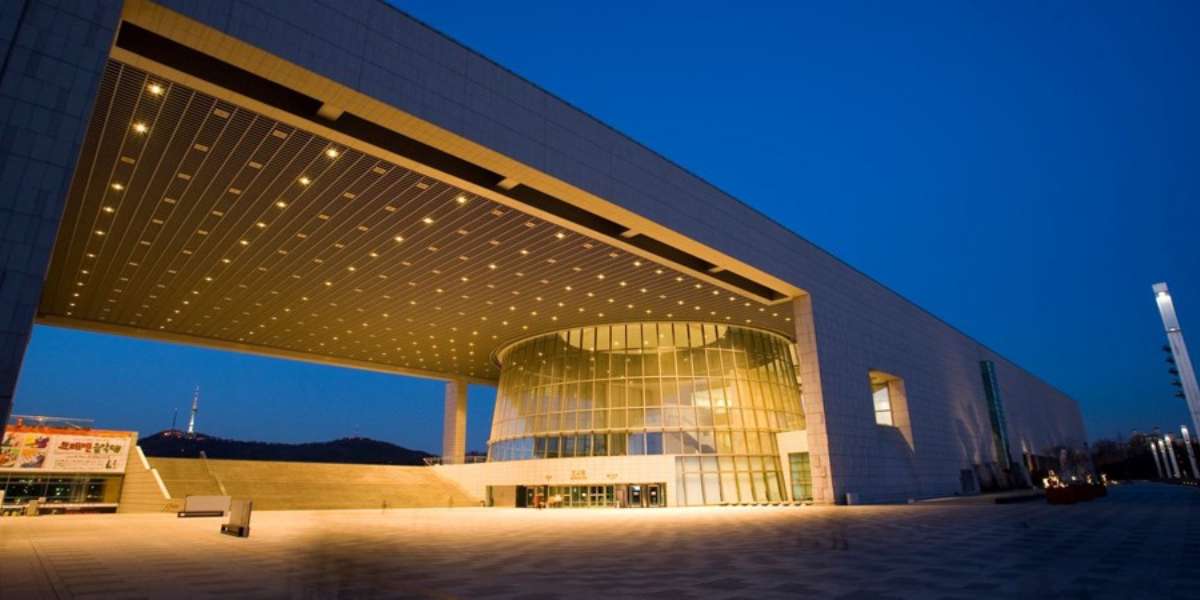
Moreover, families can unwind at the nearby Yongsan Family Park with I, which has a field, pond, and natural education center where you can spot various bird species.
Jjimjilbangs
No visit to Seoul is complete without dipping into the world of jjimjilbangs, traditional Korean bathhouses segregated by gender. Upon arrival, you’ll shower before letting yourself fully relax in saunas, steam rooms, and hot baths of different temperatures and scents. It’s important to note that jjimjilbangs are typically clothing-free spaces, but don’t worry—Koreans are respectful of nudity, and you’ll usually be provided with loose “pajama” style clothes.
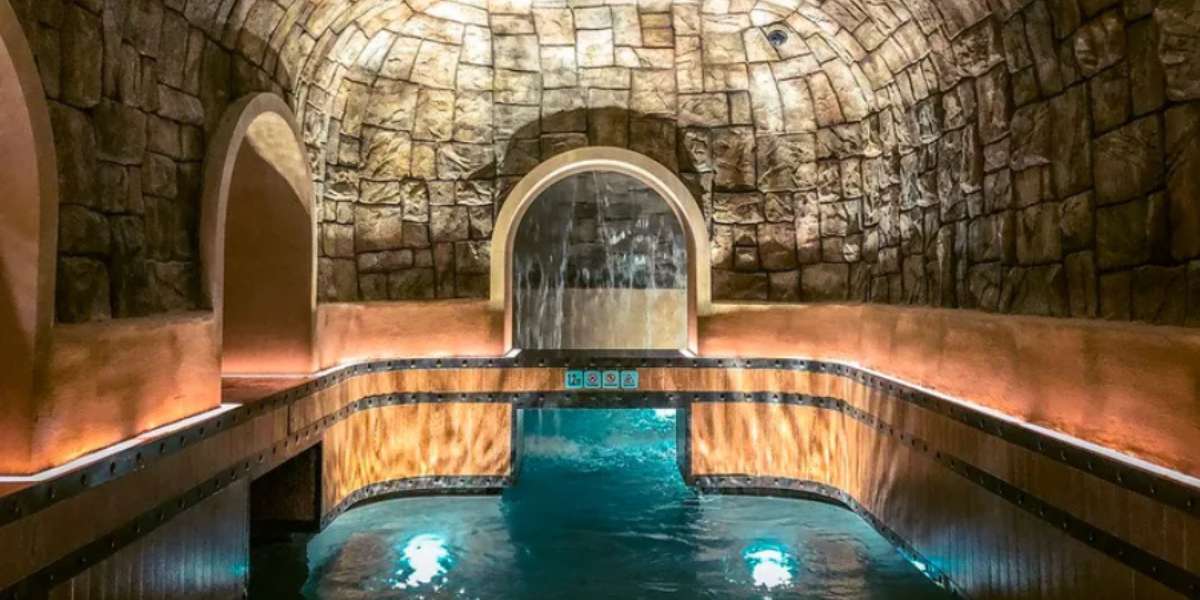
Treat yourself to a relaxing massage or enjoy an invigorating body scrub for the ultimate pampering experience while on vacation here.
Korean Folk Village
Step back in time at the Korean Folk Village, in which is a charming escape from Seoul’s modern hustle and bustle. Here, visitors can experience the bygone era of the city before urbanization took over. You can wander through the quaint streets where locals showcase traditional folk art, participate in cultural workshops, and enjoy a modern theme park perfect for entertaining the little ones.
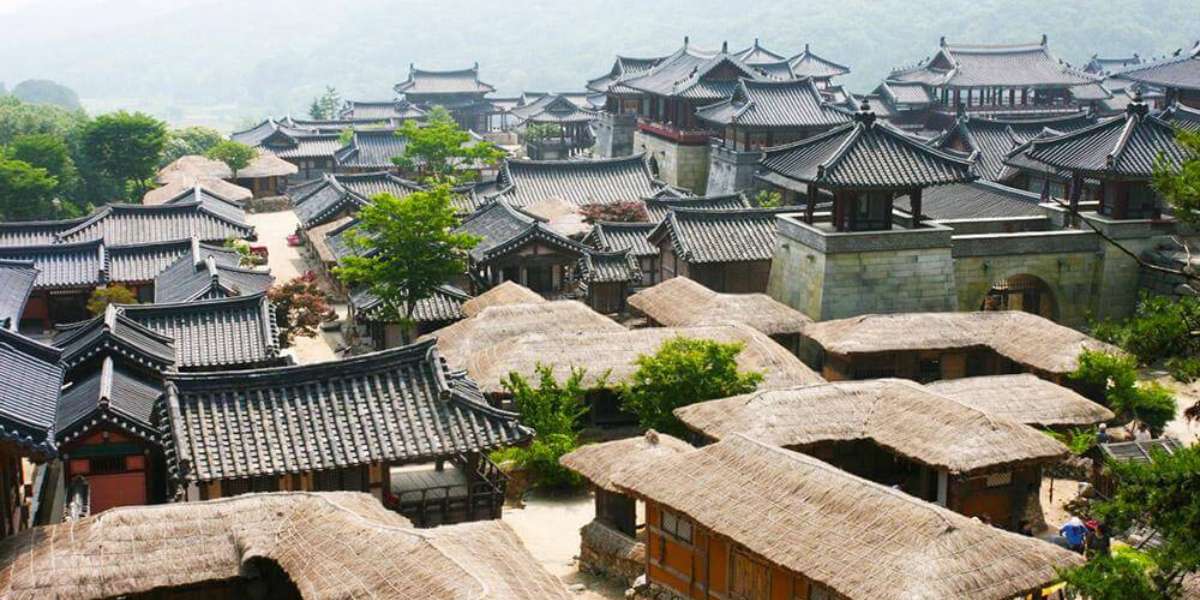
Additionally, you should check out the World Folklore Museum, Pottery Exhibition Hall, and Korean Folk Museum, where you can experience the rich heritage of Korea. Lastly, don’t miss the lively performances at the village’s performance area, featuring acrobatics on tightropes, thrilling equestrian shows, and vibrant farmer’s music and dance concerts that bring the past to life before your eyes.
War Memorial of Korea
You can pay homage to the Korean War at the War Memorial of Korea, a place of remembrance and reflection. Located in Itaewon, this museum offers a comprehensive look at the war through exhibits, educational programs, films, and cultural events. Moreover, you can also explore thousands of war artifacts, paintings, maps, and military equipment spread across six indoor exhibition halls.
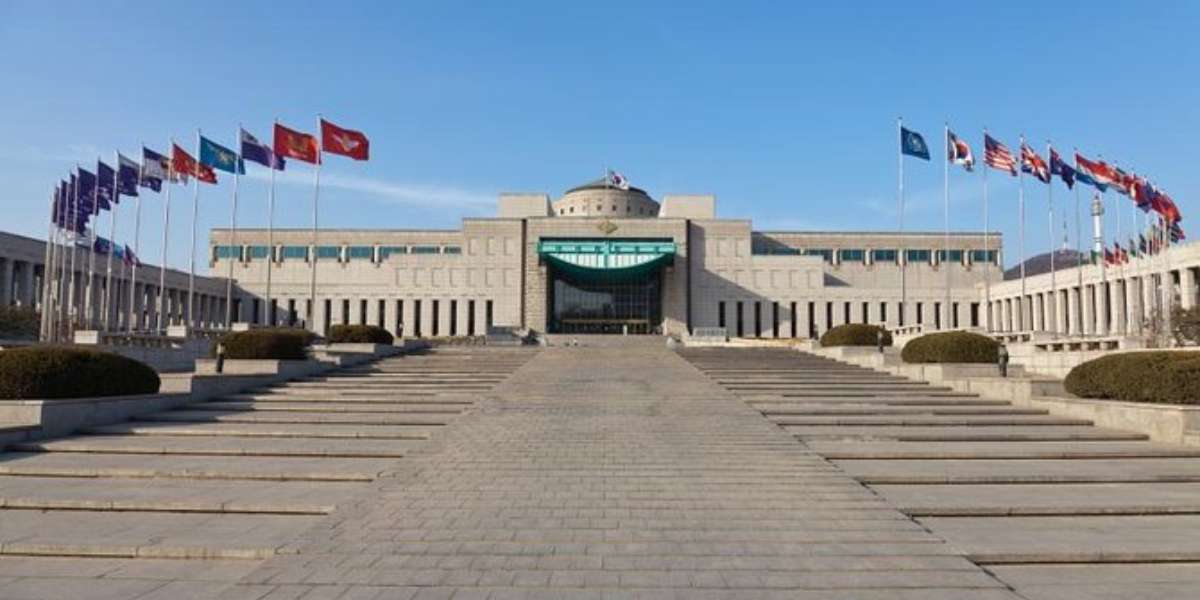
The Korean War Exhibition is where three halls chronicle the war’s history, progression, and eventual truce. Here, you’ll also see a black-and-white documentary footage narrated in English, showcasing major battles and events, alongside displays of over 20,000 artifacts and military gear.
Additionally, don’t miss The Memorial Hall, a touching tribute to fallen patriots decorated with sculptures, reliefs, and wall paintings. Outside, there’s also an exhibition gallery that showcases full-scale models of vehicles and weapons used in World War II, the Korean War, and the Vietnam War.
Olympic Park and Stadium
Another great place to explore is the Olympic Park and Stadium, a haven for fitness enthusiasts in Seoul. Constructed for the 1988 Olympics, this sprawling complex hosts athletic competitions, concerts, and various events throughout the year.
The place features the Olympic Museum, Mongchon Fortress, and the iconic World Peace Gate within the park grounds. You can also wander along paved pathways leading to a sculpture park featuring over 200 art installations.
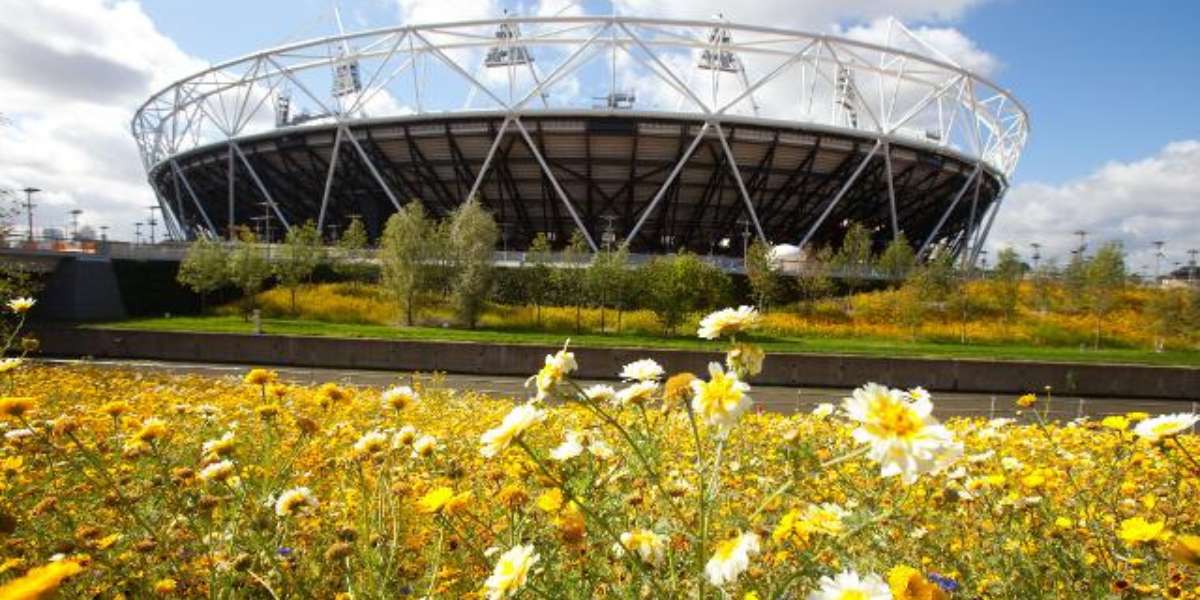
For those seeking fun activities, the stadium offers tennis courts, a gymnasium, fencing court, and an indoor Olympic pool—all open to the public. Whether you’re looking to break a sweat or immerse yourself in art and history, the Olympic Park and Stadium offer something for everyone to enjoy.
Dongdaemun Design Plaza (DDP)
Dongdaemun Design Plaza (DDP) is a place filled with creativity and fun. It’s all about dreams, design, and having a good time. DDP is a cool spot where different cultures come together to celebrate art, fashion, and ideas in South Korea.
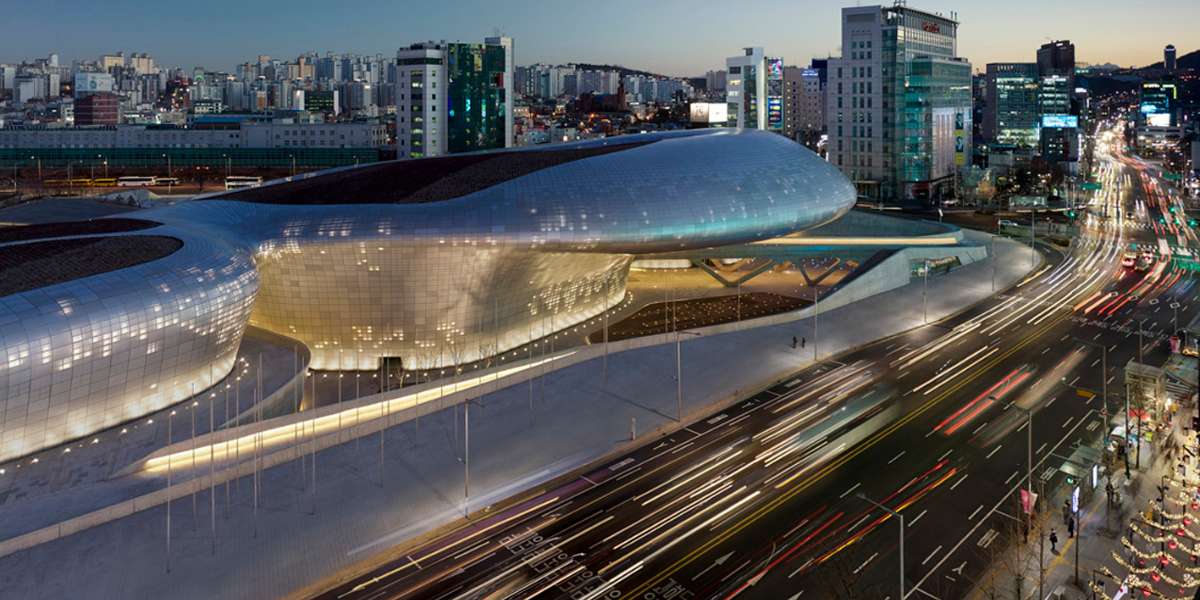
Designed by the famous architect Zaha Hadid, DDP is a modern marvel. Its unique exterior is made up of over 40,000 shiny aluminum panels, each one different from the rest. It’s like a giant puzzle that’s always changing!
Inside DDP, there’s so much to see and do. You can check out gorgeous exhibitions, watch exciting fashion shows, or attend interesting forums and conferences. There’s even a design museum where you can learn all about the history of art and fashion!
And, when you get hungry, DDP has some awesome restaurants where you can grab a bite to eat. And if you want to take home a souvenir to remember your visit, there’s a shop just for that!
So, whether you’re into art, fashion, or just having a good time, DDP is the place to be.
Korean Foods To Try In Seoul
You can find delicious Korean cuisine all over Seoul, from small vendors in narrow streets to fancy restaurants in luxurious hotels. These dishes have been enjoyed for over 2,000 years, and some of them were originally only savored only by royal families in Korea.
At the top of our list of must have Seoul food is kimchi, a classic Korean favorite dating back to the Shilla Dynasty. It’s made with Korean cabbage, radish, pumpkin, onion, ginger, and scallion, seasoned with chili powder, garlic, and salted seafood, then left to ferment. With over 200 variations in Seoul, kimchi is eaten alone, with rice, or added to various dishes like soups and rice cakes. It’s also the base for dishes like kimchi stew and kimchi fried rice.
Next up, bibimbap is a hearty dish found in restaurants, food courts, and street markets all over Seoul. It typically includes warm rice topped with mixed vegetables, beef or chicken, raw egg, soy sauce, and chili pepper paste. Seafood lovers can enjoy hoedeopbap, a variation of the original dish with raw seafood.
Tteokbokki is another popular Korean street food made with thick slices of boiled rice cake, fish cake, vegetables, and spices in sweet chili sauce, often sold at street vendors.
Additionally, Jajangmyeon is also a must have dish. It’s a fusion of Korean and Chinese cuisine, features thick noodles with black soybean paste, pork, and vegetables, topped with cucumber slices. And don’t forget samgyeopsal, where pork belly slices are grilled at the table and wrapped in lettuce or sesame leaf with various accompaniments like mushrooms, chili peppers, and kimchi.
Finally, Korean fried chicken is a must-try treat in Seoul.
Scams To Avoid In Seoul
Here are some common scams you should look out for as a tourist in Seoul.
Phone and Online Scams
One of the most common scams involves fraudulent phone calls or online schemes where individuals pose as representatives from banks or government agencies to trick people into sharing personal information or sending money.
Cult Ceremony Scam (For Tourists)
Travelers visiting Korea should be wary of a scam involving an elderly woman and her daughter who approach tourists on the streets. They claim that deceased relatives’ souls are unrested and persuade victims to participate in a Korean ceremony, demanding payment equivalent to 1000 times their age in Korean currency. Remember, genuine Koreans don’t approach strangers with such requests!
Fake Monks
Beware of fake monks, a global phenomenon also present in Seoul. These imposters solicit money in exchange for blessings or lucky amulets, or under the guise of temple donations. Legitimate monks never solicit donations on the streets, so ignore any such requests.
Fake Prices
Tourists may encounter inflated prices at local shops, restaurants, or stalls, despite listed menu prices. Some establishments may overcharge unsuspecting visitors. Tourist police are stationed at main tourist spots to address such issues in Seoul but you should still be extremely vigilant.
Pickpocketing
While crime is rare in Korea, pickpocketing is a very common concern. Thieves here operate in groups and target individuals carrying valuable items like phones or jewelry. They use distraction techniques to steal belongings, so remain aware of your surroundings and keep valuables secure.
Fake Products
Beware of sellers offering counterfeit goods like cosmetics or electronics at discounted prices. While these items may appear genuine, they often lack quality and legitimacy. So, we highly recommend sticking to purchasing from authorized retailers to avoid being scammed.
Lastly, it’s crucial to stay vigilant and informed about potential scams, verifying the legitimacy of any requests for personal or financial information. If you encounter suspicious activity, you should always report it to the authorities promptly.
Things To Do If You Are In Seoul For One Day
Whether you’ve got a short layover or just a day to spare in Seoul, there’s plenty to explore even with limited time. Here’s a one-day itinerary that packs in the best of Seoul, with locations that are only 10-15 mins away by walk!
Begin your day at Gyeongbokgung Palace and enjoy the rich history of Korean royalty. While you’re here, don’t miss the captivating Changing of the Royal Guard ceremony that happens hourly and offers a glimpse into ancient traditions.
Just a short stroll away from the place is the National Folk Museum of Korea, where you can find the cultural heritage of the country through fascinating exhibits and artifacts.
Next, head over to the charming lanes of Bukchon Hanok Village. Traditional Korean houses line the streets here, providing a stunning snapshot of Seoul’s architectural past. We recommend taking your sweet time to soak in the peaceful atmosphere and capture some memorable photos in this historic neighborhood.
After exploring the village, visit Namsang Park and the iconic N Seoul Tower, taking in the breathtaking panoramic views of Seoul from its observation deck. You should take along a lock or buy one from the nearby shops to participate in the famous Locks of Love tradition!
And, no visit to a city is complete without exploring at least one food street. So, for your final destination of the day, go to Gwangjang Market, a bustling hub of Korean street food. Enjoy savory pancakes, spicy rice cakes, and other mouthwatering treats as you soak up the lively atmosphere of this vibrant market here. It’s the perfect place to conclude your one day trip to Seoul.
Things To Do If You Are In Seoul For 3 Days
You can enjoy the dynamic fusion of history, culture, and modernity in Seoul within just three days with a well planned itinerary. Here’s a well-planned itinerary you can follow to make the most of your time in this iconic city.
Day 1
Begin your Seoul adventure with a trip to Namsan Park and N Seoul Tower and treat yourself to breathtaking views of Seoul’s skyline. Then, enjoy some retail therapy at Myeongdong shopping district, where you’ll find everything from Korean skincare gems to mouthwatering local delicacies.
For a taste of history, we also recommend visiting the National Museum of Korea that has thousands of relics from ancient times.
Day 2
On Day 2, visit the majestic Gyeongbokgung Palace and follow this up with a lovely stroll through the National Folk Museum of Korea to uncover the essence of Korean culture. Next, head over to the charming Bukchon Hanok Village and end you day with a quick trip to Insadong’s vibrant streets.
Day 3
For your last day in Seoul, relax and unwind at a traditional Jjimjilbang before enjoying some more of Korea’s history and culture. Once you’re pampered and well-rested, head to the Jongmyo Shrine. Follow this up with a visit to Gwangjang Market and enjoy authentic Korean delicacies. Finally, wrap up your trip in Seoul with a glimpse into the future at Dongdaemun Design Plaza (DDP), where art and innovation meet each other.
Things To Do If You Are In Seoul For Seven Days
Seoul is a beautiful city with hundreds of fun things to do and see. Even a lifetime here isn’t enough to truly know all the wonders of the city! But, a week in Seoul gives you a decent amount of time to explore the breathtaking hottest spots in the city. From magnificent palaces to historical museums and shopping streets, our seven day Seoul itinerary has it all.
Day 1
Kick off your Seoul adventure by exploring the magnificent Gyeongbokgung Palace, a majestic royal residence from the Joseon Dynasty. With its grand pavilions and over 300 buildings, it’s a sight to behold! While you’re here, make sure to catch the Changing of the Royal Guard ceremony for a true taste of tradition.
Next up on our list is the Changdeokgung Palace, famous for its well-preserved architecture and Secret Garden. Take a leisurely stroll and soak in the tranquil atmosphere amidst lush greenery in this beautiful garden.
Finally, to wrap up your day, visit the Jongmyo Shrine, a UNESCO World Heritage site, where you can experience traditional ceremonies and admire the stunning grounds.
Day 2
Get ready for a day packed with excitement and exploration! Kick things off with a leisurely stroll through Namsan Park, where you’ll be treated to stunning views of Seoul and its gorgeous surroundings. Take in the beauty of the Cherry Blossom Path and keep your eyes peeled for charming local wildlife along the trails.
Next, make your way to N Seoul Tower for stunning panoramic views of the city skyline and don’t forget to participate in the beloved Locks of Love tradition, a symbol of everlasting affection.
Lasltly, visit the Bukhansan National Park. Here, you can marvel at towering granite peaks, lush forests, and ancient Buddhist temples.
Day 3
Today is all about indulging in some retail therapy and having a blast. Spend your day exploring Dongdaemun, Seoul’s ultimate shopping destination, featuring an array of malls, specialty shops, and wholesale stores. Enjoy the lively and fun atmosphere of the bustling market streets and treat your taste buds to some mouthwatering Korean cuisine at Mukja Golmok.
In the evening, head over to Lotte World, a world-renowned theme park offering thrilling rides, wonderful cultural performances, and a traditional market street bustling with activity. It’s the perfect place for a fun-filled outing with the entire family.
Day 4
For your fourth day in Seoul, visit the Bongeunsa Temple, a peaceful Buddhist sanctuary located in the heart of Gangnam-gu. You can enjoy the ancient traditions of Buddhism and take part in a temple stay program, offering a firsthand experience of Buddhist rituals and practices.
Afterward, make your way through the vibrant streets of Insa-dong, renowned for its charming antique shops, art galleries, and cozy traditional teahouses. Don’t forget to explore cultural gems like the Kimchi Museum and Jogyesa Temple while youre here.
And now, it’s finally time for some relaxation! Head over to a traditional jjimjilbang and unwind in soothing saunas while pampering yourself with rejuvenating spa treatments!
Day 5
Day 5 is dedicated to exploring Korea’s rich history and heritage. Begin your journey at the War Memorial of Korea, a tribute to the Korean War which features immersive exhibits and memorial halls. You can gain insight into the tumultuous history of the conflict and pay homage to the brave souls who sacrificed their lives.
Next up on our list is the National Museum of Korea, home to a vast collection of over 15,000 artifacts spanning centuries of Korean history. Explore the fascinating galleries and take a leisurely stroll through Yongsan Family Park to end your day.
Day 6
On day 6, head over to the Bukchon Hanok Village, a charming neighborhood decorated with traditional Korean homes, quaint tea houses, and captivating museums. Its labyrinthine alleyways are great for strolls and enjoying the timeless beauty of Korean architecture. Don’t miss the vibrant performances at the village’s performing arts stage and the peaceful ambiance of the traditional Korean garden while you’re here.
After you’re done exploring the village, dive deeper into Korean culture at the Korean Folk Village. This is a living museum that offers a glimpse into traditional Korean life. Explore its diverse attractions, including the World Folklore Museum, Pottery Exhibition Hall, and Korean Folk Museum. Additionally, be sure to catch the enthralling performances at the village’s performance area, featuring acrobatics, equestrian shows, and dynamic farmer’s Korean music and dance performances.
Day 7
As your Seoul adventure draws to a close, why not end it on a high note with a visit to Olympic Park and Stadium? This vibrant recreational center is a playground for all ages, offering a wide variety of activities to keep you entertained. You can explore the Olympic Museum and step back in time as you discover the history of the Games. Additionally, don’t miss the majestic Mongchon Fortress located within the park. It’s a true testament to Seoul’s rich heritage!
You can also play sports, enjoy leisurely stroll along winding pathways, or take a refreshing dip in the Olympic pool awaits.
And, for the last place to explore before heading back home, swing by Dongdaemun Design Plaza (DDP). You can lose yourself in the world of art and innovation as you explore captivating exhibitions and discover hidden gems at stylish boutiques here. And of course, no visit to DDP would be complete without sampling some mouthwatering Korean cuisine at the plaza’s diverse eateries.
As you browse through the dozens of shops, don’t forget to pick up souvenirs for yourself and gifts for loved ones back home. With its unique blend of culture, creativity, and cuisine, DDP is the perfect way to end your Seoul adventure on a high note.


